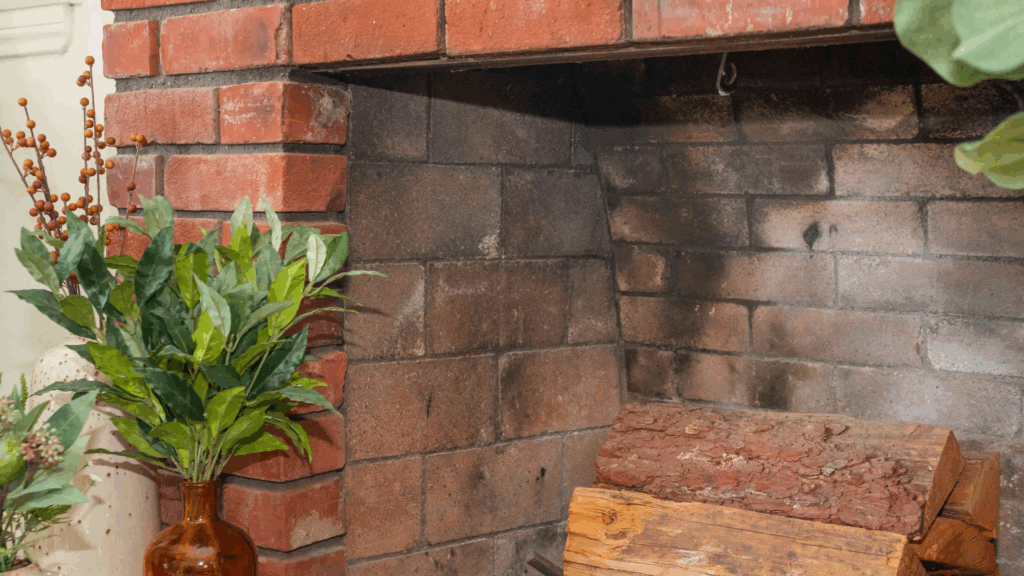I’ve dealt with the stubborn mess soot can leave on brick surfaces, especially after using the fireplace during colder months. It tends to cling to the brick, darken the surface, and make the whole area look neglected.
Over time, I’ve learned that using a few simple tools and household supplies can restore that brick to a clean, natural look.
I’ve tried several methods, from gentle vinegar solutions to stronger options like TSP, and each has its place, depending on the thickness of the soot buildup.
The key is using the right technique for the situation and always starting with a surface that’s safe to work on.
In this guide, I’ll walk through what has worked best for me when cleaning soot off both indoor and outdoor brick.
What Is Soot?
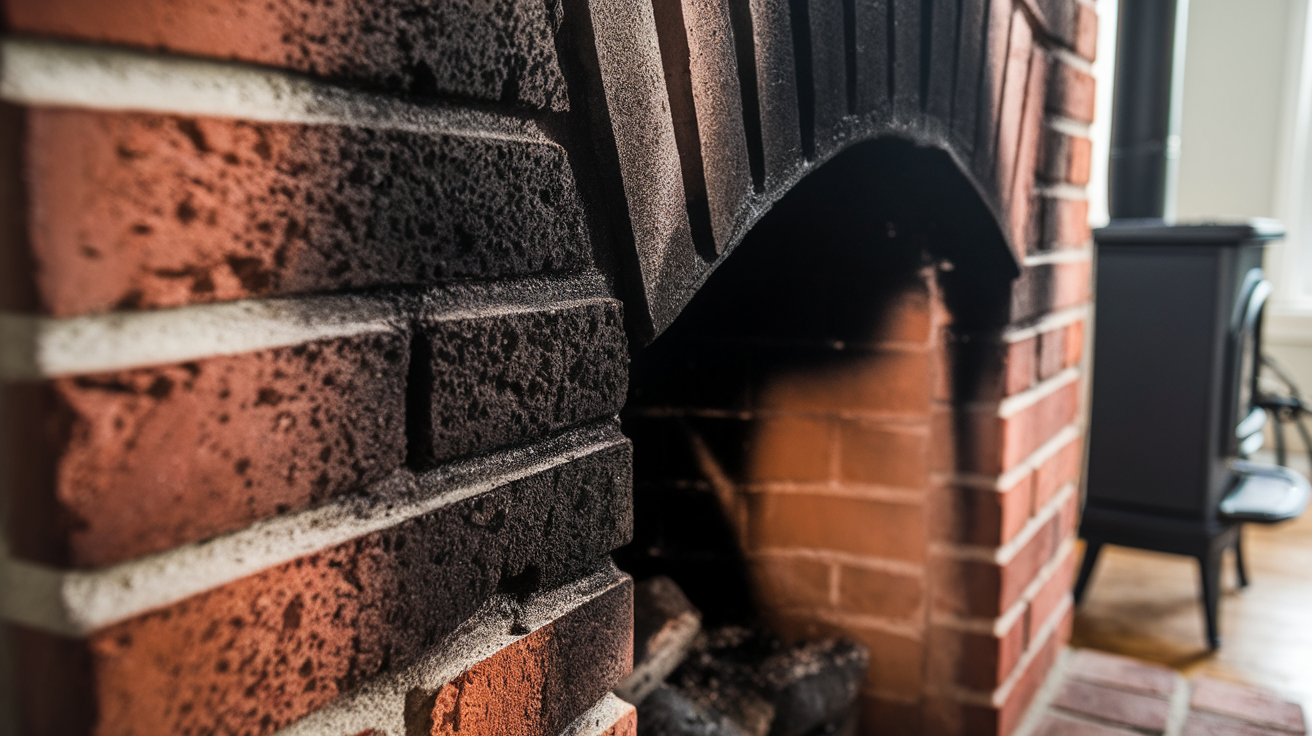
Soot is a dark, powdery substance made of carbon particles from incomplete combustion, often found on surfaces around fireplaces, chimneys, and wood stoves.
While it may seem like a simple stain, soot can be difficult to remove as it seeps into porous materials like brick.
Besides being unsightly, soot can carry harmful toxins and odors, especially in indoor areas with limited airflow. If left untreated, it can degrade air quality and damage the brick over time.
Regular cleaning and maintenance are crucial to restoring brick surfaces and ensuring a healthier, safer environment.
Step-by-Step Guide: Cleaning Soot Off Brick Surfaces
Below is a step-by-step guide to effectively remove soot from brick surfaces, using the right tools, techniques, and common household cleaners for the best results.
Materials Needed
- Scrubbing Bubbles cleaner (for delicate surfaces)
- Nylon scrub brushes (ideal for delicate brick or tile)
- Wire wheel brush attachment (for tougher natural stone or brick)
- Power drill (to attach wire wheel)
- Pump sprayer filled with water and a few drops of Dawn dish soap
- Towels or tarps (to protect the flooring and catch debris)
- Protective eyewear and gloves (for safety during scrubbing)
Step 1: Prepare the Area
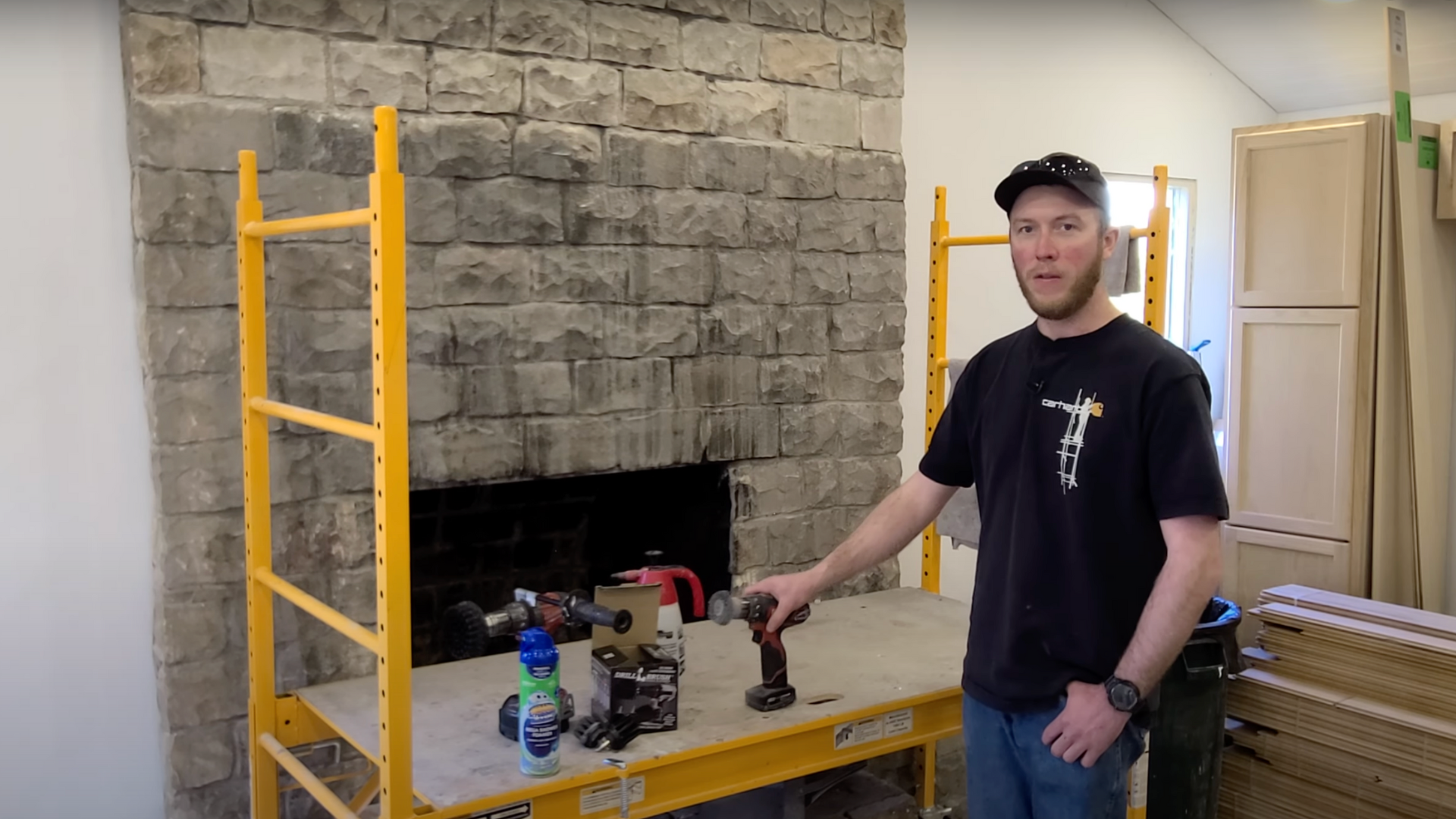
Lay down towels, beach tiles, or a large tarp around the base of the fireplace or brick wall to catch runoff water and loosened soot.
If you’re working in a finished area, this is especially important to protect flooring and surrounding materials from grime splatter and water damage.
Step 2: Pre-Wet the Brick
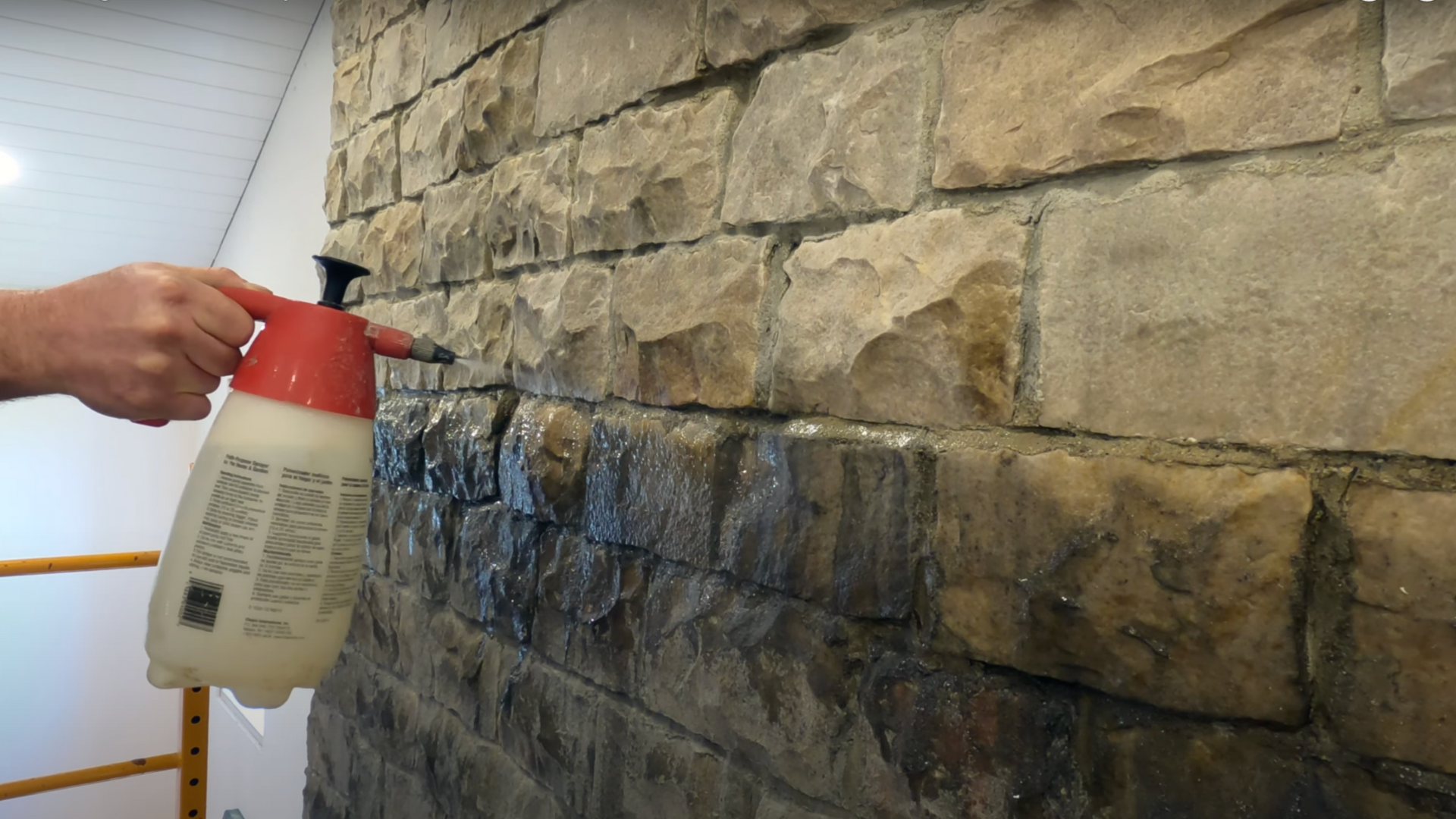
Using a pump sprayer, saturate the brick surface with water mixed with a few drops of Dawn dish soap.
This softens the soot and acts as a lubricant, reducing dust while also helping the cleaning brush glide more smoothly across the surface.
Step 3: Choose the Right Brush
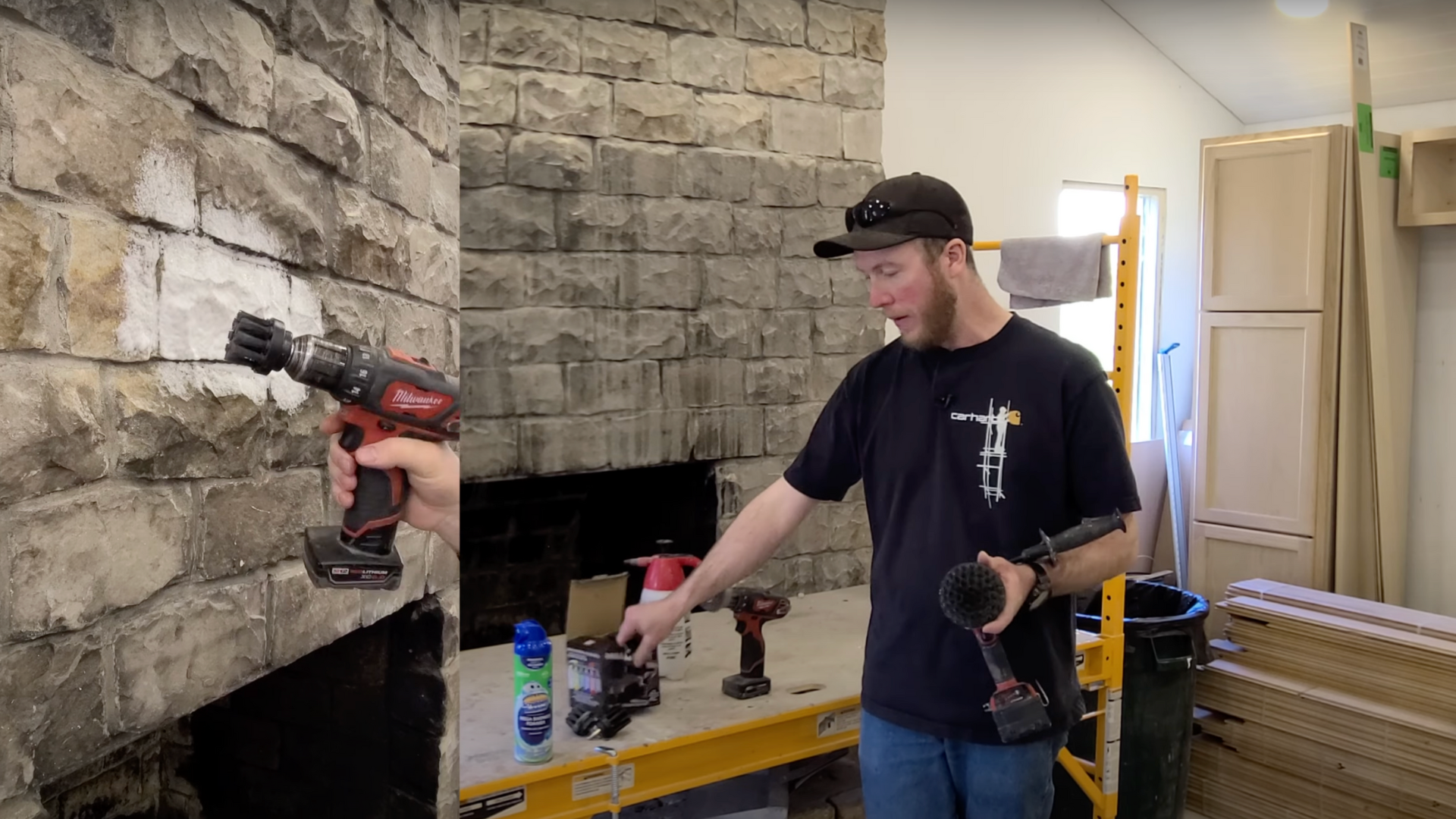
If the brick or stone is delicate, begin with nylon scrub brushes and Scrubbing Bubbles cleaner.
These are gentle enough to avoid damaging the surface and are ideal for lighter soot buildup.
Use a circular scrubbing motion and be prepared to do two passes for thorough cleaning.
Step 4: Use a Wire Wheel for Heavy Buildup
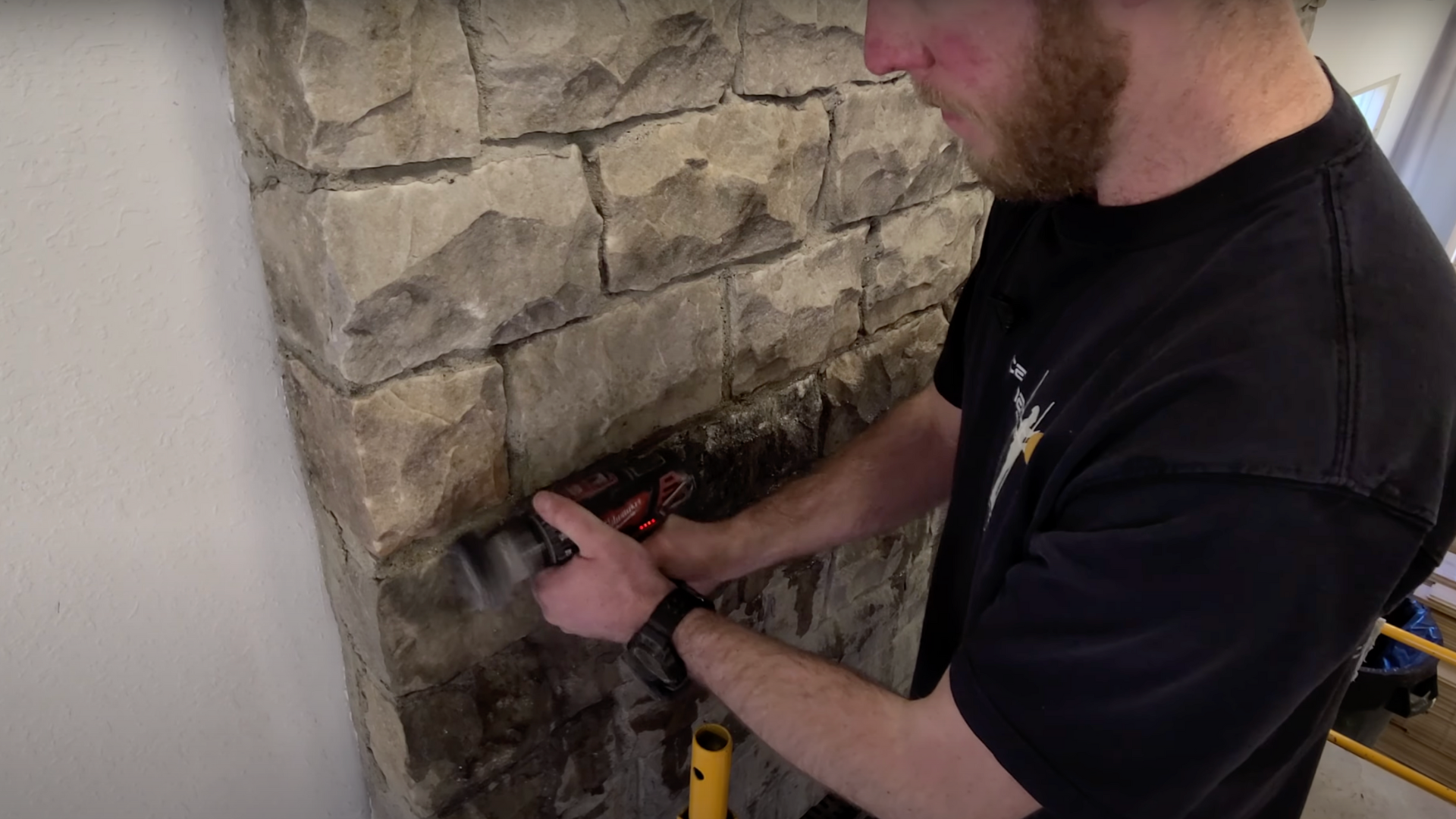
For heavily soiled or older brick, switch to a wire wheel brush attached to a drill. This tool cuts through thick soot layers with ease.
Apply even pressure while moving the wheel across the brick, working row by row.
The wire wheel offers better control than a wire cup, especially for getting into corners and uneven surfaces.
Step 5: Rinse and Repeat
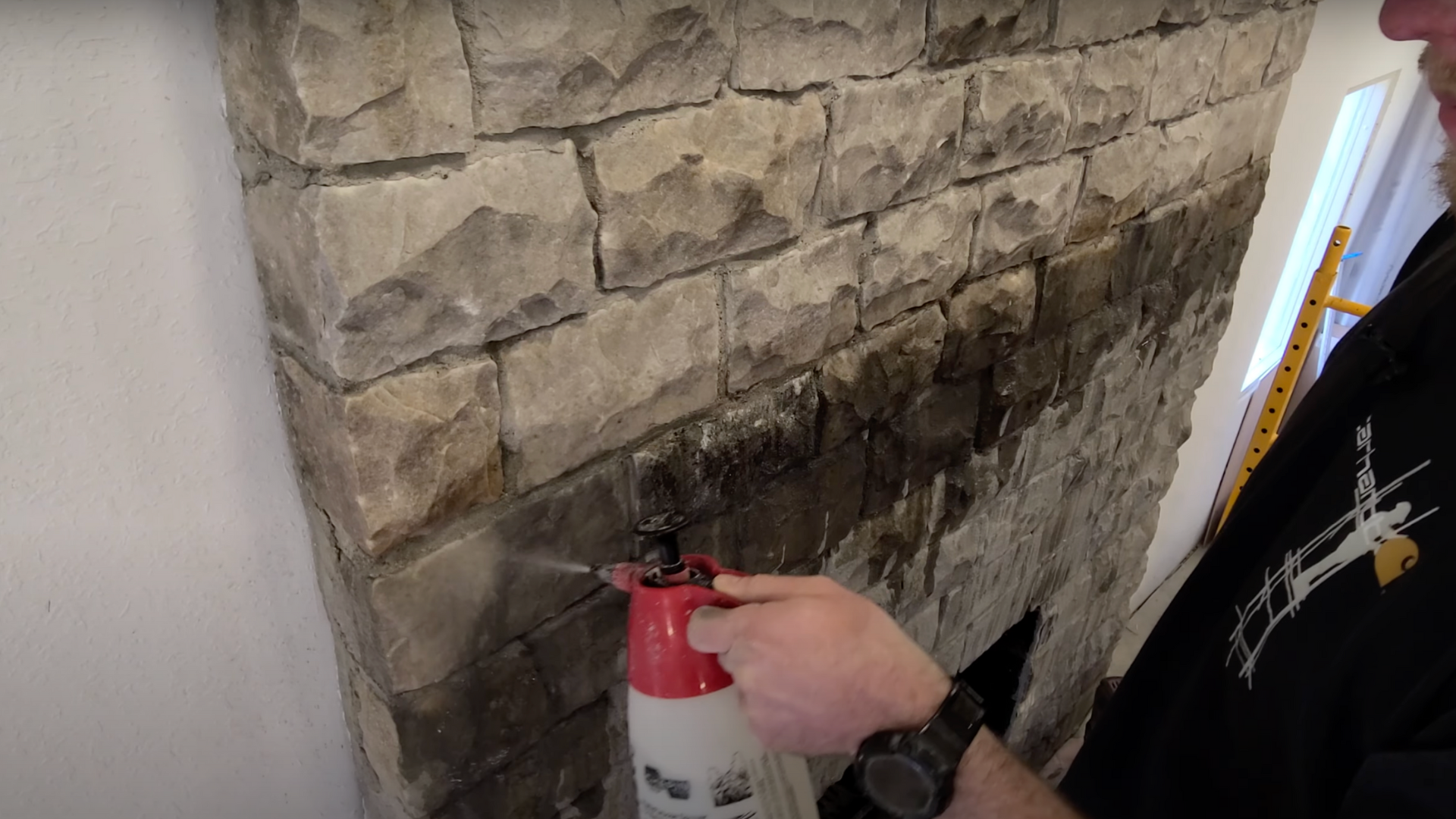
After scrubbing a section, rinse with clean water from the pump sprayer or a cloth. Assess the area for any missed spots.
Touch up as needed by reapplying water and scrubbing lightly again. Continue this rinse-and-repeat cycle until the entire brick surface is clean.
Step 6: Final Touches
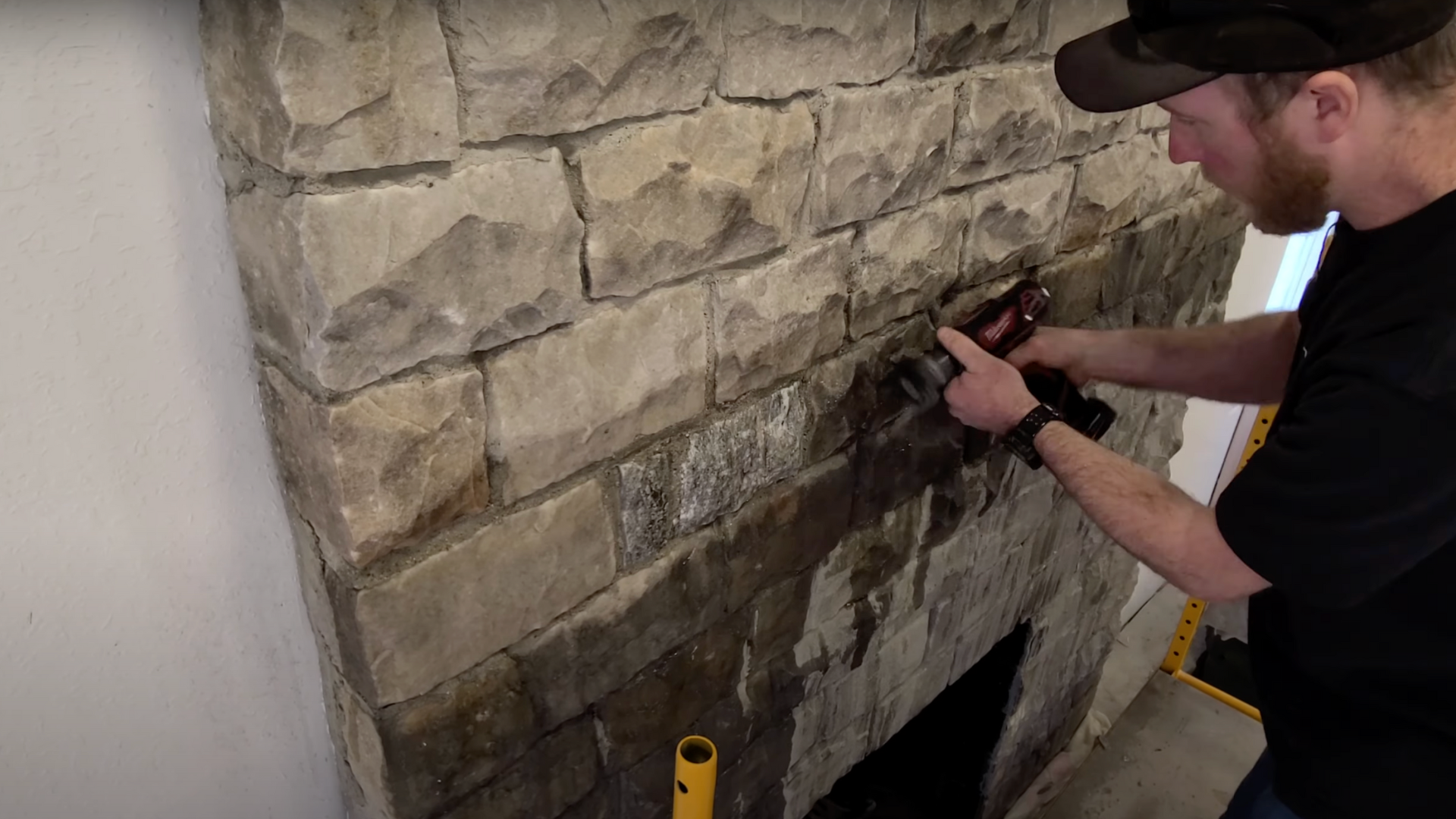
Once the job is complete, allow the surface to air dry completely. Remove all towels or tarps and clean the area.
Despite initial concerns about mess, with proper preparation and tools, the process is manageable and leaves the brick looking refreshed and soot-free.
For a visual guide, refer to this video on how to clean soot off a brick surface by @Tyler_Koehn on YouTube.
Homemade Soot Cleaning Methods
These DIY methods use simple household items to remove soot from brick without harsh chemicals effectively. They’re ideal for light to moderate stains and safe for use indoors.
1. Dish Soap and Salt Paste
Create a paste by combining one ounce of dish soap and one ounce of table salt with just enough warm water to form a spreadable mixture.
Apply this to soot-stained brick and scrub gently with a stiff brush.
Let the paste sit for about 10 minutes to break down soot, then rinse thoroughly. This mild abrasive cleaner is tough on stains but safe for brick surfaces.
2. Vinegar Solution (Light Soot)
Combine equal parts warm water and white vinegar in a spray bottle or bowl. Apply to the brick using a sponge or cloth and scrub gently.
This solution is especially effective on light soot and helps neutralize smoke odors.
Always test on a small area first, as vinegar can affect painted or softer brick surfaces over time.
3. TSP (Trisodium Phosphate) Solution for Heavy Buildup
For heavily soiled brick, mix TSP with warm water following the label instructions. Scrub the mixture into the soot with a stiff brush, then rinse thoroughly with clean water.
TSP is a powerful degreaser and ideal for stubborn buildup, but should be used with gloves, eye protection, and good ventilation due to its chemical strength.
4. Dry-Cleaning with Soot Eraser Sponges
Use dry-cleaning sponges made of natural rubber to lift soot without water or chemicals.
Gently rub the sponge over the surface; it collects soot particles without smearing.
This method works best for lighter stains and is especially safe for painted or delicate brick where moisture might cause damage or streaking. It’s clean, controlled, and mess-free.
Preventing Future Soot Buildup
Simple habits and regular maintenance can significantly reduce soot accumulation on brick surfaces over time.
- Install a chimney cap to block debris and improve airflow, reducing soot formation.
- Use a fireplace screen to contain ash and prevent sparks from staining nearby brick.
- Burn only seasoned, dry wood to produce cleaner, hotter fires with less soot.
- Schedule annual chimney cleaning and inspection with a certified professional to ensure proper ventilation and remove buildup.
- Clean brick surfaces regularly with mild solutions to prevent heavy soot layers from forming and settling.
When to Call In a Professional?
While many soot stains can be tackled with DIY methods, there are times when calling a professional is the best option.
If soot buildup is extensive, deeply embedded, or covers a large area like a fireplace surround, professionals have the tools and cleaners needed for a thorough clean.
They’re also skilled at handling delicate, old, or painted brick without causing damage.
Professionals use commercial products and equipment not available to consumers and can identify underlying issues like poor ventilation or flue blockages.
If DIY efforts aren’t working or you’re unsure about using stronger chemicals, hiring a certified expert ensures the job is done safely and effectively.
Tips for Effective Soot Removal
Quick, practical tips to improve cleaning results and protect brick surfaces during soot removal.
- Always start with dry brushing to remove loose soot before applying liquids.
- Test cleaning solutions on a small, hidden area to check for discoloration or damage.
- Work from top to bottom to prevent dirty runoff from re-soiling cleaned areas.
- Use stiff-bristled brushes for unpainted brick and soft brushes for delicate finishes.
- Keep the surface wet while scrubbing to reduce airborne dust and aid in lifting soot.
- Avoid using bleach, as it can weaken mortar and discolor brick.
- Use protective gear, including gloves, goggles, and a mask, when working with chemicals or wire brushes.
- Rinse thoroughly after cleaning to prevent residue buildup and streaks.
Conclusion
Cleaning soot off brick doesn’t have to be overwhelming with the right methods and tools.
From simple dish soap and salt pastes to stronger solutions like TSP, each technique fits depending on the buildup.
Regular maintenance and preventive steps, like installing a chimney cap, help keep brick surfaces clean.
Even heavily soiled bricks can be restored with patience or tools like a wire brush. If needed, don’t hesitate to call in a professional for delicate cases.
If this guide helped you, try these methods and share your results. Clean brick is possible. Start your project today.
Frequently Asked Questions
How often should I clean soot off the brick?
Cleaning frequency depends on usage, but for fireplaces, aim to clean soot off the brick once or twice a year, or more often if buildup is visible.
Can I use bleach to clean soot from brick?
It’s not recommended. Bleach can weaken mortar and cause discoloration. Stick to gentler options like vinegar, dish soap, or TSP when needed.
Will vinegar damage brick?
Diluted vinegar is generally safe for unpainted brick but can etch softer or painted surfaces. Always test a small area first.
What’s the best way to clean painted brick?
Use a dry-cleaning sponge or a gentle soap-and-water solution with a soft cloth. Avoid abrasive brushes or strong chemicals that could strip paint.

